Healthy Diet 🫛
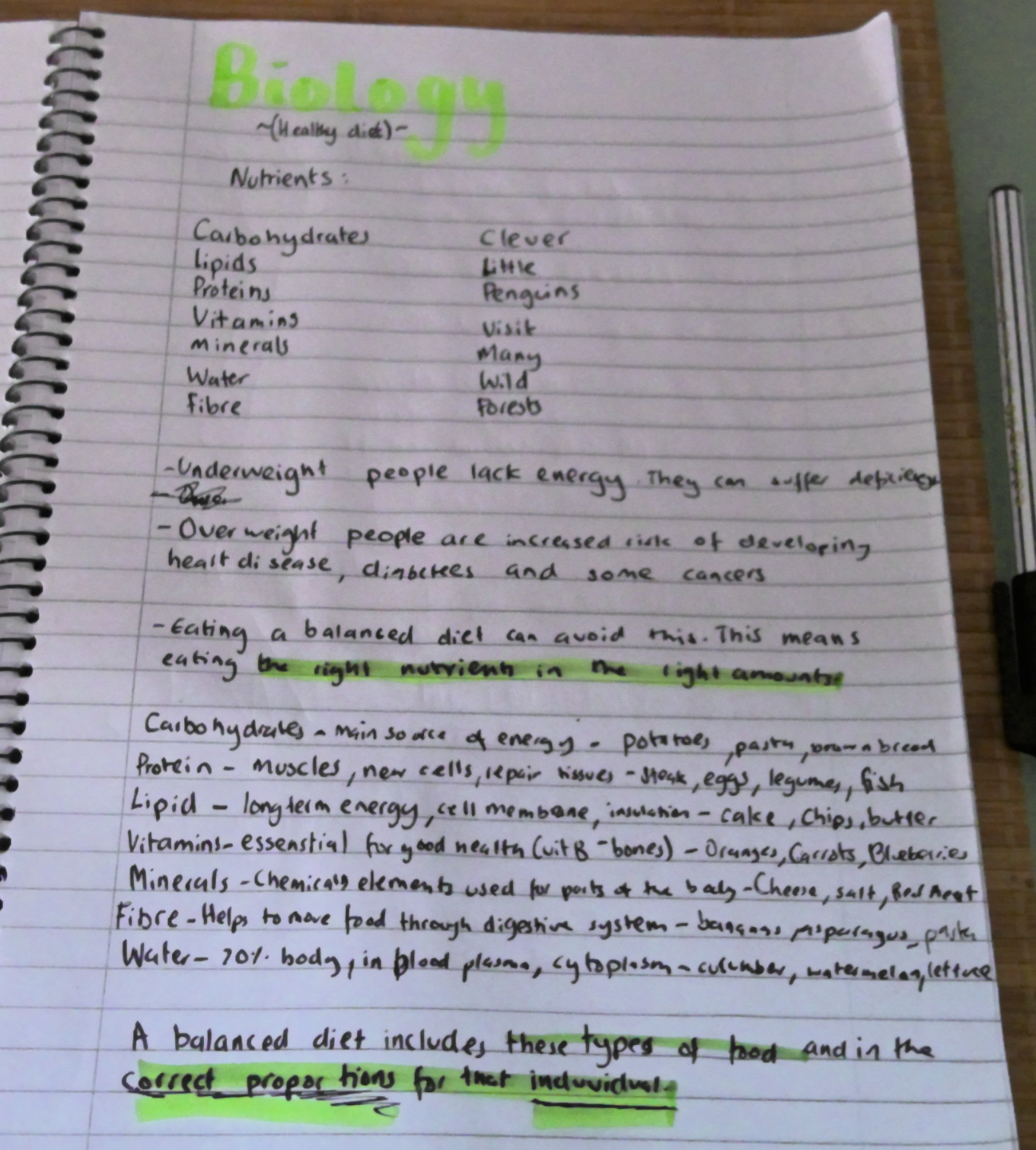
A healthy diet is essential for maintaining overall health and well-being. It typically includes: carbohydrates,lipids, proteins, vitamins, water, fibre, minerals
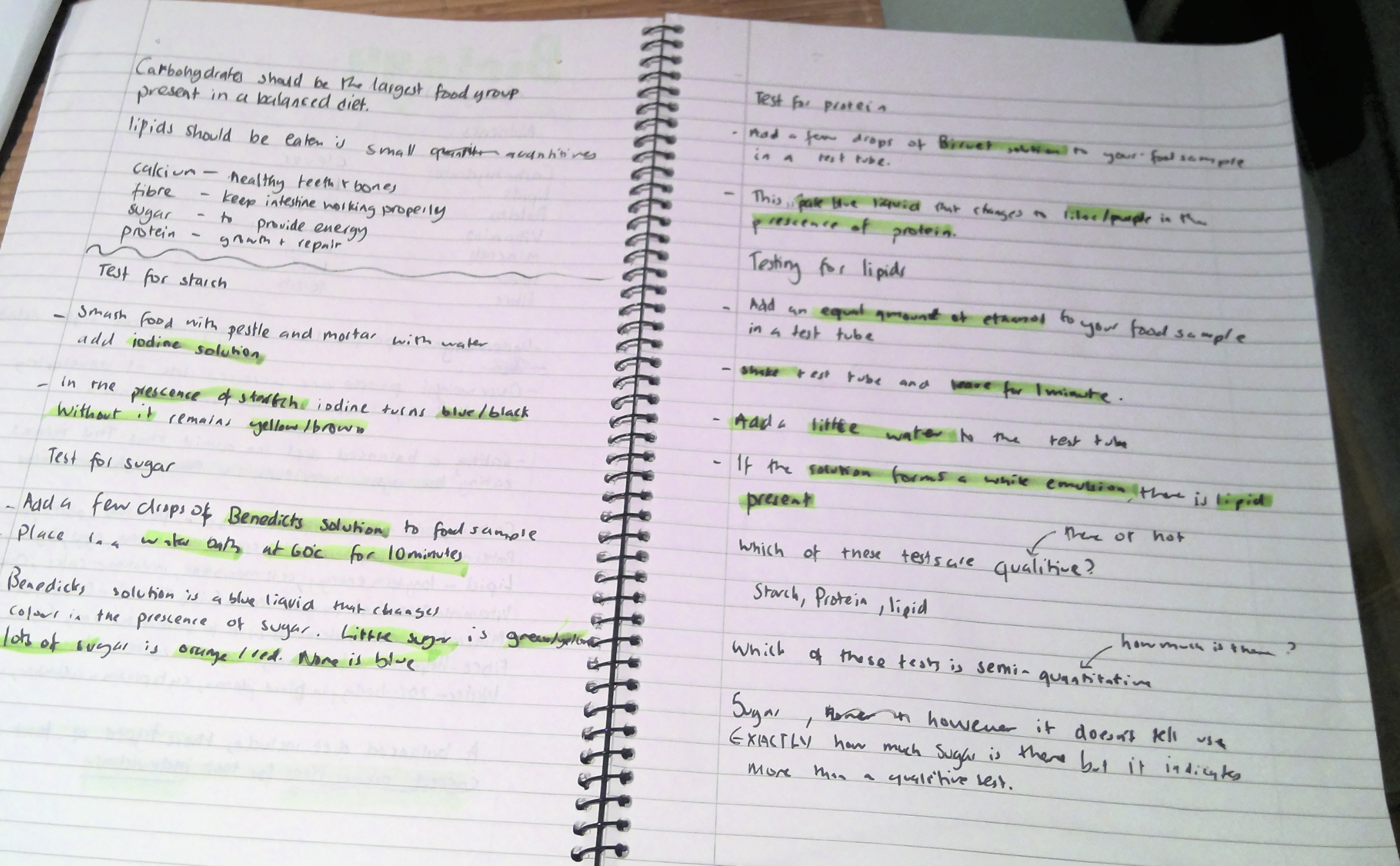
Test protein- biruet solution. pale blue to lilace/purple
test starch- iodine. yellow to blue/black
test for lipid- ethanol. white emulsion
test for sugar- benedick solution water bath 60 degrees 10 minutes - semi qualitative test, yellow/green little sugar, orange/red lots of sugar
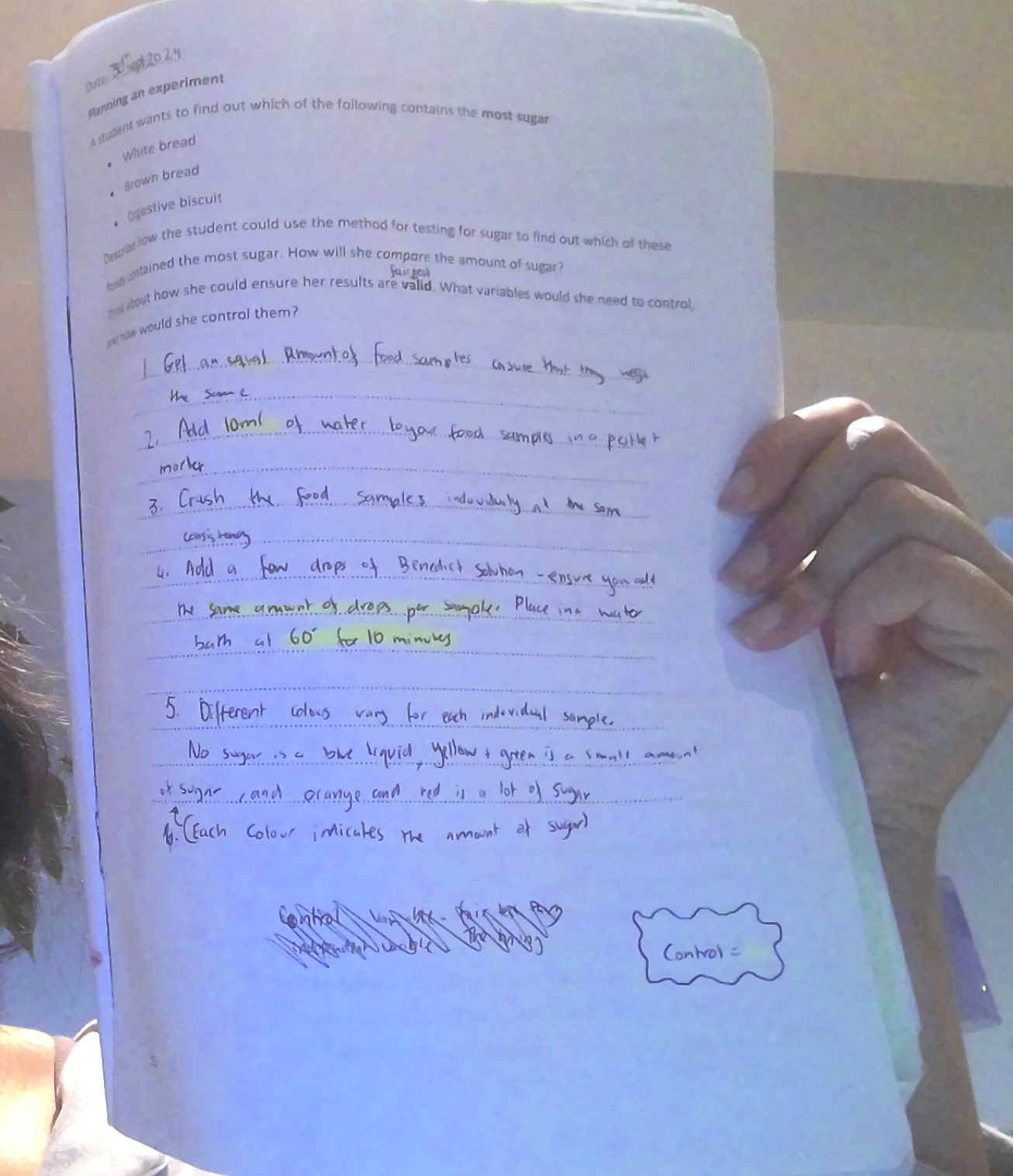
test for vitamin C - DCPIP solution. blue to colorless
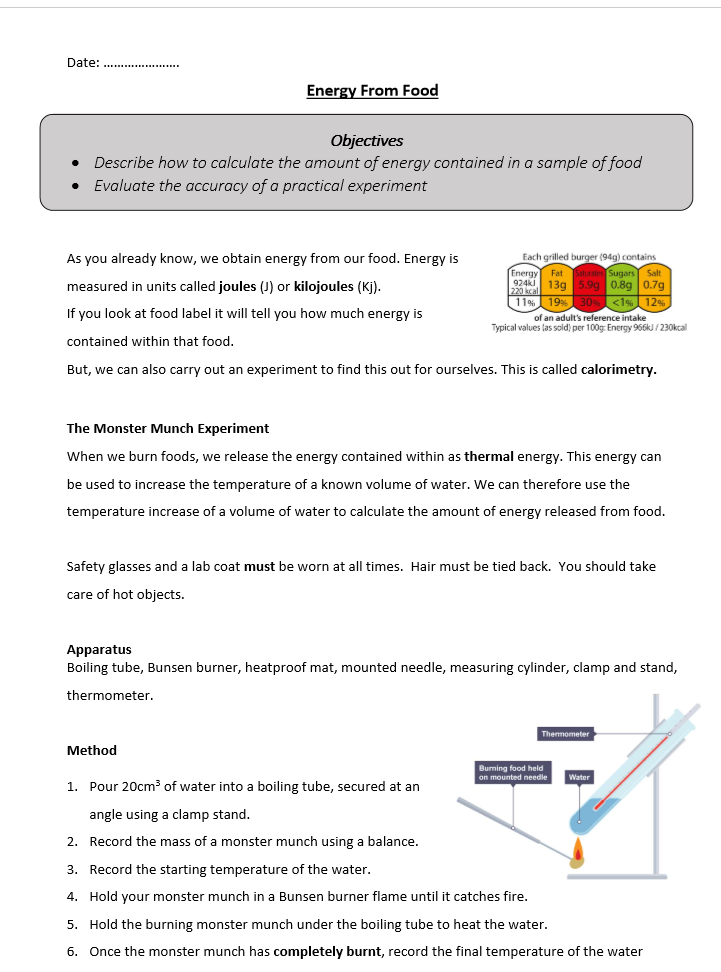
reproducible= consistent results that can be obtained across multiple experiments, confirming the reliability of the testing methods used.
Fibre cant be used by the body because it cant be broken down. It helps to keep the bowels moving.
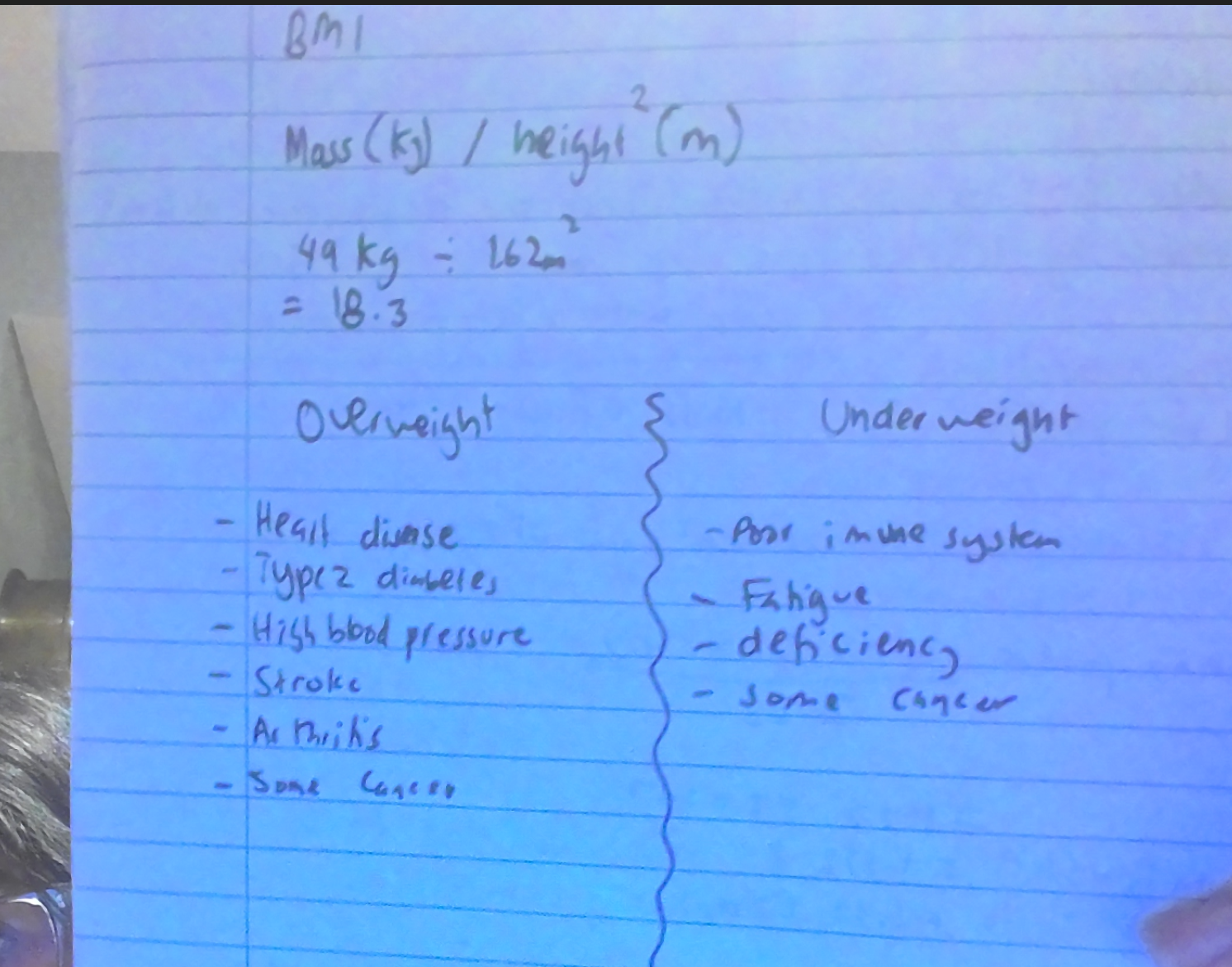
vitamin c- production of collagen, protect cells from damage, imune function support deficeincy for vitamin c is called scurvy symptoms are bleeding gums , internal bleeding under skin,soreness. it is found in citrus fruits, potatoes and red bell peppers
vit d- calcium absorption, mood regulation, helps fighting infectious diseases it is found in fatty fish, egg yolks, and mushrooms
deficiency for vitamin d is called osteomalacia for adults and rickets for children and can lead to weakened bones and an increased risk of fractures.
Vitamin A - essential for vision, immune function, and skin health; deficiency can lead to night blindness and increased susceptibility to infections.
Iron- oxygen transport, energy production, imune function, makes haemoglobin
; deficiency can cause anemia, leading to fatigue, weakness, and reduced immunity.
Calcium - bone and teeth health, muscle function, nerve transmission; deficiency can lead to weak bones, increased risk of fractures, and muscle cramps. it is called hypocalcemia
the deficiency of protein is called kwashiorkor.
An unbalanced diet can lead to health issues like obesity, heart disease, and malnutrition. Excessive unhealthy foods can cause weight gain and increase the risk of diabetes, while nutrient deficiencies weaken immunity and bone health.
Vitamins and minerals are essential for overall well-being. They regulate body processes, support metabolism, and strengthen bones. A balanced diet with fruits, vegetables, proteins, and whole grains helps maintain good health.
Calculation
It takes 4.2J of energy to increase the temperature of 1cm3 of water by 1°C.
1cm3 of water has a mass of 1g.
We can therefore use the following formula to calculate the energy value of the food we have burned:
Energy released from food per gram (J)
mass of water (g) x temperature rise (°C) x 4.2
=
mass of food sample (g)
If the number is more than 1000 J, express it as kilojoules (kJ): 1 kilojoule = 1000 joules
Worked example: the change in temperature of 20cm3 water with a 2.65g monster munch was 37°C
Total energy released by the monster munch = 20 x 37 x 4.2
= 3108 J
Energy released per g of monster munch
=31082.65
= 1172.8 J or 1.2 KJ/g
But, we can also carry out an experiment to find this out for ourselves. This is called calorimetry.
The Monster Munch Experiment
When we burn foods, we release the energy contained within as thermal energy. This energy can be used to increase the temperature of a known volume of water. We can therefore use the temperature increase of a volume of water to calculate the amount of energy released from food.
Safety glasses and a lab coat must be worn at all times. Hair must be tied back. You should take care of hot objects.
Apparatus
Boiling tube, Bunsen burner, heatproof mat, mounted needle, measuring cylinder, clamp and stand,
thermometer.
Thermometer
Method
1. Pour 20cm3 of water into a boiling tube, secured at an angle using a clamp stand.
2. Record the mass of a monster munch using a balance.
3. Record the starting temperature of the water.
Burning food held
on mounted needle
Water
4. Hold your monster munch in a Bunsen burner flame until it catches fire.
5. Hold the burning monster munch under the boiling tube to heat the water.
6. Once the monster munch has completely burnt, record the final temperature of the water
Planning an experiment
A student wants to find out which of the following contains the most sugar . White bread,
Brown bread, Digestive biscuit
Describe how the student could use the method for testing for sugar to find out which of these bad contained the most sugar. How will she compare the amount of sugar?
fairtest
The about how she could ensure her results are valid. What variables would she need to control,
and now would she control them?
3. Crush the food consistency Samples induviduly at the same. 4. Add a few drops of Benedict solution - ensure you add the same amount of drops per sample. by placing the test tubes in a boiling water bath for a few minutes to allow the chemical reaction to occur.
Observe the color change in each sample, which indicates the presence of reducing sugars, and record your findings for analysis.
To ensure that the test for sugar content in white bread, brown bread, and digestive biscuits is fair and valid, the student should: 1. **Control Variables** - Use the same amount of each food sample for testing to ensure that the comparisons between the samples are accurate. - Crush each food sample to a consistent size to ensure uniformity in the reaction during the test. - Add the same number of drops of Benedict's solution to each sample to maintain consistency in the testing process. - Place all test tubes in the boiling water bath for the same amount of time (a few minutes) to ensure that the temperature and reaction time are equivalent for all samples. 2. **Record Data** - Observe and note the color changes in each sample after the test, which indicates the presence of reducing sugars. - Make sure to record the results accurately for each sample to facilitate fair comparison of sugar content based on the intensity of the color change.